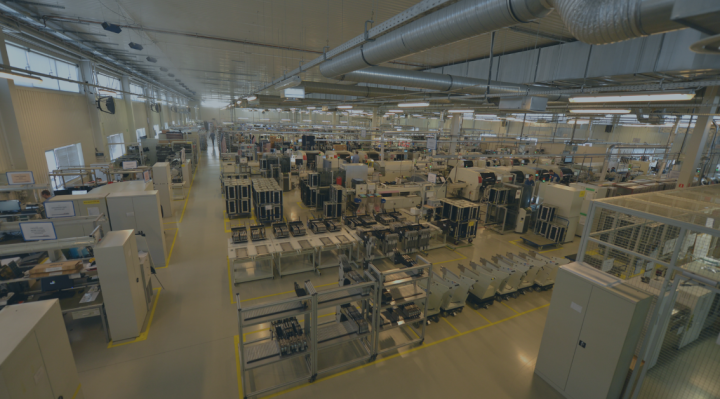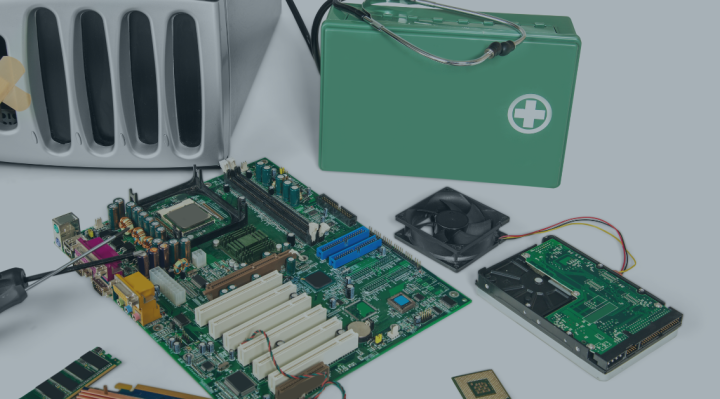The year 2020 proved to be particularly unpredictable – the pandemic and its impact on basically all industries proved to be huge and far-reaching in its consequences. And although the date on the calendar already changed to 2021, the reality around still remains extremely dynamic. We cannot be sure what exactly awaits us in a month or two. A foresightful contract electronics manufacturer is aware of the potential challenges that may appear along the way, especially thanks to a well-developed strategic plan and an ongoing risk analysis.
Below, we discuss several potential challenges facing the EMS industry that anyone involved in contract electronics manufacturing should be aware of.
1. Requirements related to ecology
Running a business, its continuous improvement and development, and the economic calculation are also focused more and more often on the implementation of the assumptions behind sustainable development. On the one hand, it is an expression of the organization's self-awareness regarding the consequences of overexploitation of the environment. It's also a necessity arising from the applicable national and international regulations, mainly in the scope of recycling and waste management. It is no different in the context of the EMS industry. Here, too, relevant rules concerning the social responsibility of manufacturers have been developed.
A contract electronics manufacturer that actually does pay attention to the environment and makes an effort to minimize its impact on it will meet the standards in this scope contained, for example, in the ISO 14001 and ISO 26000 standards.
ISO 14001 – Environmental Management System
ISO 14001 – Environmental Management System is a standard that determines the scope of good practices for the sake of environmental protection to be implemented and applied on an ongoing basis by businesses and institutions. An important task of the standard is to support the organization's environmental protection activities that can prevent pollution.
Its implementation is related to both the environmental goals and aspects of reducing energy, electricity and water consumption or waste.
ISO 26000 - Guidance on social responsibility
The ISO 26000 standard provides guidance on the basic principles of social responsibility (CSR). The implementation of the guidelines makes it easier for a company to undertake actions that contribute to sustainable development.
It defines social responsibility as the social and environmental impact of an organization's decisions made and actions taken through transparent and ethical behavior in seven areas. One of the areas is focused on environmental practices. These practices aim to reduce the organization's impact on the environment through an integrated approach that takes into account the direct and indirect economic, social, health and environmental impacts of the decisions made and actions taken.
2. The risk of disruption in the supply chain management due to COVID-19
Supply chain management is becoming increasingly complex, which in turn leads to additional problems and requires paying increased attention and dedicating more resources to it. This is due to the fact that the flow of electronic components now covers not only a given country's internal market but entire regions and continents. The distance itself ceased to be a barrier and became another factor to be calculated.
The outbreak and expansion of the pandemic caused several difficulties for both global production and logistics. Most electronic materials are manufactured in Asia, including China, where an epidemiological situation has brought many factories to a standstill. Once the problem is relatively under control, both in China and elsewhere, sanitary considerations also significantly impact lower production rates compared to the output being achieved back in 2019.
Equally serious repercussions have also extended to the transportation of goods industry. Global freight transport and trade on an industrial scale are mainly based on maritime and air (cargo and passenger) transport. Grounded aircraft and quarantines at ports not only equal delays in deliveries but also a reduction of the active transportation fleet, which, combined with increased courier shipments, translates to increased costs for transporting goods.
In such market conditions, a contract electronics manufacturer will focus their resources on precise and long-term material planning, including supply chain management, at the highest level. This will allow us to perform our obligations in a planned manner as well as minimize the risk of delays in deliveries. An equally important aspect of planning deliveries, apart from keeping them going smoothly, is consolidating orders allowing to reduce shipping costs.
3. Shorter and shorter product life cycle
The product life cycle is a period during which a product is present in the market. It consists of four phases:
- Introduction to the market
- Sales growth
- Saturation/maturity
- Decline in sales
The length of a given product's life cycle depends on the dynamics of the sales market. In the case of the consumer electronics market, it is not slowing down. On the contrary, the trends and consumer preferences are changing rapidly, and the market is quickly absorbing either newer versions of already known solutions or completely new products. As a result, product life cycles are getting shorter, so good and efficient electronics contract manufacturer needs to learn how to quickly, yet cost-effectively, retool their production lines to meet the current needs of its customers, which comprises switching production from one product to another or re-prioritizing production for the client if there is currently higher demand in the market.
Effective management of the new product introduction process (NPI) includes both optimized planning systems that ensure faster response in the component market and efficient management in production. This combination provides the customer with a guarantee of flexibility and smooth operation of the EMS.
4. Industry 4.0
Internet of Things (IoT) has revolutionized not only the entertainment or household electronics sector but also the industry. The Industrial Internet of Things (IIoT) helps increase business efficiency, support decision-making thanks to more analyzed data, and unlock new sources of profit.
The IIoT is a concept that is being used more and more often in electronics manufacturing. It is the working method that characterizes the so-called smart factories. Such factories are based on cyber-physical systems - the integration of the Industrial Internet of Things and new production methods. This allows you to maintain great control over the product and production processes, including the so-called full traceability. This way, during, e.g., an SMT assembly, the contract electronics manufacturer knows exactly what is happening with the product, from which batch of materials it is composed.
The increasing automation of processes requiring less and less direct involvement of employees and artificial intelligence are directions that will save costs and increase operational efficiency. However, along with the investment in technology should come a knowledge of how to take full advantage of the latest solutions as well as properly qualified people who will build and operate the processes.
5. Allocations of electronic components
https://asselems.com/en/electronics-component-market-in-2021
The basic factors that shape the markets are demand, supply and price. With the right balance of these three market forces, the economy is in constant flux, and goods change owners and latitude. What happens when this state of particular homeostasis is disturbed? This is what 2020 showed us, and its successor does not foretell a quick recovery—both in the electronics manufacturing industry, as well as many others. So how esxacly will change electronics comonent market?
Price increases
The stock exchange boom resulted in an increase in the price of natural raw materials, including copper, which is necessary for the production of a large part of components utilized in electronics manufacturing. This, in turn, causes a chain reaction – an increase in the cost of raw materials causes an increase in the prices of semi-finished and finished products and, consequently, an increase in the prices of the final products.
In order to minimize the risk of incurring high costs of purchasing components for their OEM, a contract electronics manufacturer should build a stock of necessary components. However, this solution raises new problems and risks:
- Providing storage space for components
- Proper protection as well as wear and tear of individual batches of components
- The general stoppage of production in many industries (e.g., the automotive industry did not do any manufacturing for approximately 3 months after the pandemic commenced)
- A general slowdown in the Ordering Party's production, due to which its demand for SMT assembly is also at a lower level
- Problems with the availability of components on the market (a problem of component allocation)
Component allocations
The complete stoppage of production caused by the epidemiological situation, followed by the awakening of the market, meant that the demand for components exceeded supply. This has resulted in component allocations – manufacturers are trying to deliver their products to everyone, while not necessarily in the desired quantities. Consequently, the lead time for materials increases because factories are running at full capacity, which has often been reduced due to following the sanitation regime and thus have no spare capacity.





